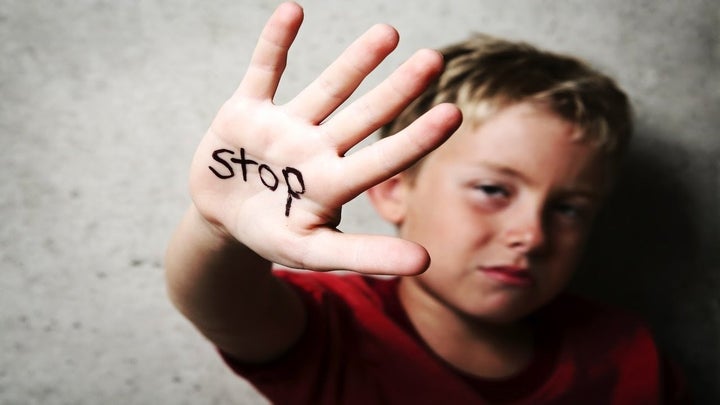
What are you doing to stop child abuse against children?
An epidemic is sweeping an ugly tide across the United States; domestic violence and child abuse against our children.
Howl large is the problem? Studies show that up to five million children in the United States experience and/or witness domestic violence each year. Whether it’s watching an act of physical or sexual abuse, listening to threats or sounds of violence, or viewing the evidence of such abuse in a victim in the signs of bleeding, bruises, torn clothing, or broken items, the effects are damaging to a child, in a variety of ways. Children in our nation are suffering from an epidemic of child abuse from those who proclaim to love them the most. Indeed, witnessing domestic abuse can also be traumatic for a child.
You may say it doesn’t happen where you live. You may believe that you do not know of any children who are victims of this type of violence and abuse. Make no mistake, domestic violence against children is happening all around you. Children in the very city you live in are victims of this horrific crime. Furthermore, the abusers and perpetrators may be your colleagues at work, members of your church, your neighbors, and even those who come to your annual family reunion. Children around you are falling victim to domestic violence and abuse. It is up to you to help bring an end to it. Here are 8 ways we can all help to stop domestic violence against children.
1. Recognize the Signs
The first step in helping to prevent domestic violence is to recognize the signs. To be sure, it may be difficult to recognize when a child is being abused, as the signs are not always visible to the eye. Indeed, domestic violence is not always physical. Other forms of domestic abuse include verbal abuse, emotional abuse, and economic abuse. Along with this, it is likely that the children suffering will not speak up on their behalf, as so many children suffer in silence.
2. Provide Resources
Whether it is providing support classes for parents, teaching them child care and parenting strategies, or helping with economic support and stability during times of difficulty, struggling parents and families need help and support. Violence against children can be reduced when parents and families are equipped with strategies, support, and skills when caring for children.
3. Support Children
Often times, children are great imitators. They frequently model what they learn and experience from the adults in their lives. Time and time again, a child’s greatest role model is often the parent. For those children who have watched a parent inflict violence and abuse upon another, these children are more apt to repeat this later on in their adult life with their spouses or partners. Drugs and alcohol abuse later in their lives is also likely path. In order to break this future cycle of abuse, we need to offer therapy, counseling, support, and services to these children.
4. Raise Awareness
Knowledge is power, and awareness brings advocacy. Educate those around you about the realities of domestic abuse and violence. Whether it is where you work, where you exercise, where you practice your faith, or where your own circle of friends and family are, inform and educate them about this issue. When those around you become aware of the realities of domestic violence among children, they become advocates, as well.

5. Organize your Community
Faith based organizations, civic groups, schools, community leaders, and local and state legislatures can all come together to both fight child abuse. Contact these organizations and individuals and organize meetings with them, as well as with your local law enforcement. Create a child abuse prevention team in your area, and in your city.
6. Be an Advocate
Perhaps the biggest impact one can make in preventing child abuse and domestic violence is to become an advocate of change. By contacting lawmakers, politicians, and publicity agents through means of emails, letters, phone calls, and other means of communication, one can bring attention to the needs of these children who are various forms of abuse. Along with this, these advocates of change can also post information in editorial letters, websites, public forums, and so forth. By lobbying for change, new laws can be introduced, and information can be brought forward to the general public.
7. Document
If you suspect child abuse or domestic violence is happening to a child you know, document what you see. Time, date, location, and information is important, if you should have to file a report of some kind. Documentation should be done in a factual and non biased fashion, and not in an emotional manner. Just the facts, so to speak. Your documentation can go a long way in helping to protect a child.
8. Report
If you know of an incident of child abuse or domestic violence, it needs to be reported, and it needs to be reported by you now. Not tomorrow; not next week. If a child is in danger, he needs to be rescued from it today. Call the police, call local law enforcement, call 911, or call The National Domestic Abuse Hotline at 1-800-799-SAFE (7233). Do not try to intervene or become involved in the situation, as it could lead to additional danger.
Dr. John DeGarmo is a leading expert in parenting and foster care. Dr. John has been a foster parent for 14 years, now, and he and his wife have had over 50 children come through their home. He is a consultant to legal firms and foster care agencies, as well as a speaker and trainer on many topics about the foster care system. He is the author of several foster care books, including The Foster Parenting Manual, and writes for several publications. He can be contacted at drjohndegarmo@gmail, through his Facebook page, Dr. John DeGarmo, or at The Foster Care Institute.

